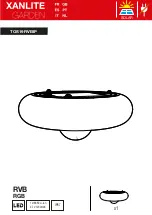
4
WIND, WATER, AND WEATHER CONDITIONS
•
Do not underestimate the power of the wind.
•
Be aware of unpredictable and changing weather conditions.
•
Avoid “offshore” or “onshore” wind conditions.
•
Avoid strong, gusty wind.
•
Be careful of wave conditions, especially when learning.
•
Be educated about tides and rip currents.
•
Be mindful of your ability level. Do not kiteboard if conditions are beyond your ability level.
•
Be educated about air and water temperatures and wear appropriate protection against the elements.
•
Do not use this product in thunderstorms.
•
Consult an anemometer to determine wind speeds if necessary.
•
Do not use an oversized kite. Consult your Wind Range Chart for the correct recommended size. Use your common
sense. If in doubt about what kite size to use, choose smaller rather than bigger.
•
Make certain that you are physically capable of operating the security Quick Release(QR) and Override™ 2 devices
provided with this kite. This kite and control system has been designed around a typical rider weight of 75kg.
Riders with a weight greater than 75kg may need to use more force to operate the QR than lighter riders. Increases in
wind strength may also result in greater force being required to operate the QR. Be certain to seek the advice of a profes-
sional such as your Authorized Cabrinha Dealer about the performance of the security systems in relation to body weight.
I M P O R T A N T I N F O R M A T I O N
WIND, WATER, & WEATHER CONDITIONS / WIND RANGE CHART
CK07Control_System_Manual.indd 4
4/18/06 4:20:53 PM









































